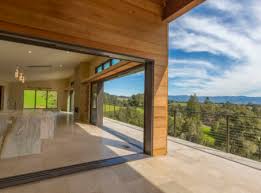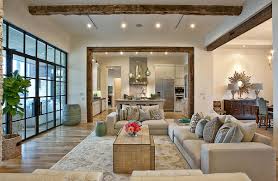Things You Need to Know Before Remodeling
1. Understand the Potential Return on Investment
If your main goal of remodeling is to increase the value of your home so that you have the highest return when you sell, then you should do return on investment (ROI) research. Remodeling projects that are low maintenance, good quality, and aren’t too costly have the highest ROI. Sorry, but hiring a contractor to build the swankiest kitchen you see on Pinterest won’t give you a high return on investment.
According to HouseLogic, mid-range kitchen remodel projects will give you a nice ROI of 81.8%. Mid-range remodel projects have beat out high end remodels every year. A typical mid-range kitchen remodel would consist of new floors, refacing cabinets, new countertops, and new appliances.
2. Research Your Neighborhood
Just because you have the funds to remodel your home with the best features doesn’t mean you should. Home values are driven by the surrounding local market and there’s usually a ceiling to the potential selling price of homes in a neighborhood. For example, if homes nearby typically sell for $250,000 at best, then you don’t want to put more than $50,000 worth of upgrades into a home you bought for $200,000. Ask an experienced Realtor® about current home values in your neighborhood.
3. Check Local Building Permits
Depending on the details of your remodel, you may need a building permit. You’ll probably need one if your remodel involves something large like changing the footprint of your house, building an addition, or altering a load bearing wall. If you’re simply refacing cabinets and putting in a new countertop, you won’t need one. It’s smart to call your local government’s building or engineering department to double check.
4. Take Pinterest With a Grain of Salt
Pinterest is great for getting ideas (and wasting time). Just remember that the most pinned and re-pinned pictures of dream bathrooms are most likely from luxury homes. So don’t make a poor financial move just so you can share a cute picture.
5. Leave Room In Your Budget
Like Stephen King novels, most remodeling projects will come with an unexpected twist. If $10,000 is the most you can spend, then budget something closer to $8,000 so that you have some wiggle room.
6. Understand Where Your Money is Going
According to Home Advisor, labor counts for about 30-35 percent of the cost, while material products will take up 65-70 percent. When it comes to kitchen remodels, most of your money will be going towards new cabinets if that’s a part of your plan. If you’re the handy type, you can save a LOT of money by doing all or part of the labor yourself.

How to Keep Track of Your Remodel Project
1. Become a list writer. Making lists is key when it comes to project management. It’s the only way to properly organize your thoughts and prevent any details from being forgotten.
The most important list is your scope of work, or specifications, document. This is basically a detailed list of everything to be done, from start to finish. If you’re dealing with one main builder who’s organizing all the work, then you’ll need to make sure he or she gets a copy, so the goals are clear and all the information is provided.
2. Make sure you’re all on the same page. If you’re coordinating separate professionals and subcontractors (cabinetmaker, plumber, electrician), then it would be worth indicating who’s responsible for each task. Give a complete copy of the specifications to all of them, so they’re all aware of what everyone is doing. Discuss the specifications with your subcontractors since they may be able to provide help and advice. A schedule is also useful, so you can keep track of progress and everyone knows who’s going to be on-site on which day.
3. Create subsections. In addition to your main specifications, it’s a good idea to have sublists for each separate element of your design. For example, your main specifications may say “install 6 x recessed LED downlights in ceiling,” but your lighting specifications will detail where they are to be positioned, the type of bulb, the hardware finish and so on. The more information you provide, the more accurate your quote should be and the less likely it will be for mistakes or misunderstandings to occur. It will also minimize any unexpected costs.
4. Plan everything ahead. Finalize your design before starting any work, rather than trying to do it as you go along. The process will be much more enjoyable without constant deadlines presenting themselves, and if you haven’t planned, you may find your options restricted based on work that’s already taken place.
5. Never assume. You know the saying. When writing your specifications or drawing your plans, never assume that someone else will know what you want unless you explicitly state it. Include every tiny detail, no matter how picky it may seem. As well as avoiding mistakes, it also prevents any disputes over what is and isn’t included in the quote.

Things Not to Do When Remodeling your Home
In most homeowners life there will come a time when remodeling and upgrading your current amenities will be a way of life. Whether you are wanting to add space to your rooms, upgrade materials, or because your home needs more functionality, taking on a remodeling job could be in your near future. Before you get started, there are several factors to consider. While your favorite home and gardens show may make it look easy in a few days – here are 10 things not to do when taking on your remodeling home job.
Don’t assume you know how to do every home remodeling project:
Every DIY remodeling project isn’t considered equal. Before you decide which project to begin first at your home, determine what skill set and experience you have to execute your project. Many home projects will involve more expertise than others. While you may think all you need to do to replace a lighting fixture is detach the current fixture – you may forget that turning off the electricity to that circuit and other necessary requirements are necessary. Do your homework!
Don’t enlist friends and family to help you if they aren’t experienced:
In order to save money many homeowners think of hiring or asking their friends and family to help. This can lead to costly mistakes, injury, and damage to important elements in your home. While friends and family can be used for moving belongings, furniture, cleaning and other household “chores” – only let experienced family and friends assist with your home renovation.
Never assume that your budget won’t go over your estimation:
While you may have done your homework on how much your materials, labor, and miscellaneous remodeling components will cost, there always should be a budget for going over budget. Many remodeling projects will involve unforeseen circumstances that will not be conveyed until the project starts. Opening up walls can often lead to electrical, structural or plumbing surprises. Remodeling older homes can often unveil mold, pipes leaking or rotting and deteriorating wood. Keeping this in mind, create a lower budget than you think you will need, just in case.
Don’t risk your safety to get a home remodeling project done quicker or for cheaper
You may think this is self-explanatory but hospital emergency rooms around the world are filled with home improvement accident injury victims that could have been prevented. When working on high areas ensure you have the proper scaffolding, ladders, extension poles, and fall-protection safety wear to execute your job safely. If you are unfamiliar around high power tools, working around electricity and other technical portions of your home, hire a professional for your remodeling project.

Budget-friendly DIY home improvement projects
1. Clean your vinyl siding
2. Repaint the front door and update exterior accents
3. Apply removable wallpaper
4. Paint your walls
5. Refresh your cabinets
Remodeling Design Considerations
When you first begin to consider a home remodel, whether it’s a whole home renovation or a kitchen or bath transformation, cost and timeline are the most common concerns. However, there are some critical remodeling considerations that can be avoided with some careful planning.
Here are the top ten remodeling design considerations:
USE STYLES DRIVEN BY TRENDS OR FADS SPARINGLY
Whether you’ve purchased a home with lots of potential or have decided to give your existing home a facelift, it can be tempting to use trends and fads to influence your design. However, these in-today-out-tomorrow style statements often don’t age well. To make the most of your remodeling investment, keep structural, architectural, and key materials (such as floors, counters, and cabinets) timeless in design.
MAKE A PLAN AND STICK TO IT
One of the most costly mistakes can be avoided by adequate planning and committing to a budget as well as to design and material selections. While there may be some minor modifications that occur with any home remodeling project, having a detailed plan in place can keep your project moving forward with minimal delays and without breaking your budget.
UNDERSTAND THE WORK FLOW
Pesky problems such as tight spaces, troublesome doorways, and lack of access are common symptoms of design challenges. Understanding how you plan to use the space is the first step in defining the design and recommended changes.
PROVIDE PLENTY OF COUNTER AND STORAGE
Beyond the obvious needs to renovate, such as updating to a more current or personal style, one of the most common complaints about lackluster rooms is the need for additional counter and storage space.
LET NATURE SHINE
While lighting workspaces and primping areas are common sources for lighting, windows also provide an excellent source of both light and heat, especially during cold winter months.
REDUCE MOLD, MILDEW AND COOKING SMELLS
Merge moisture, improper ventilation, and overpowering smells and it’s the perfect breeding ground for mold, mildew, and lasting odors. This is why ventilation is an absolute must in kitchens and bathrooms alike. Not only does ventilation draw out undesirable smells, but it also keeps the humidity level at bay. The end result is that your home will look and smell fresh, and the ventilation will protect your investment by ensuring that your home isn’t overtaken by mold, mildew, and rot that erode material stability.